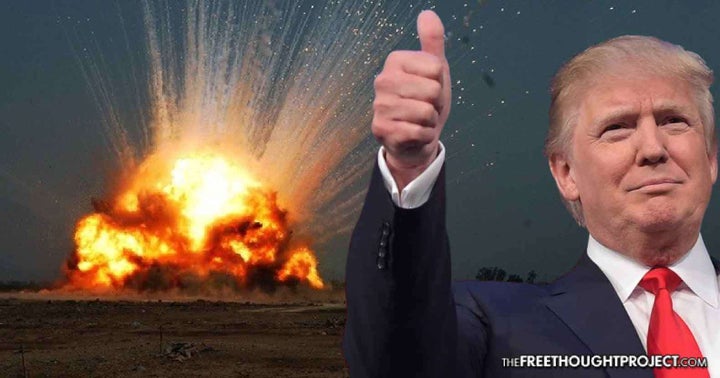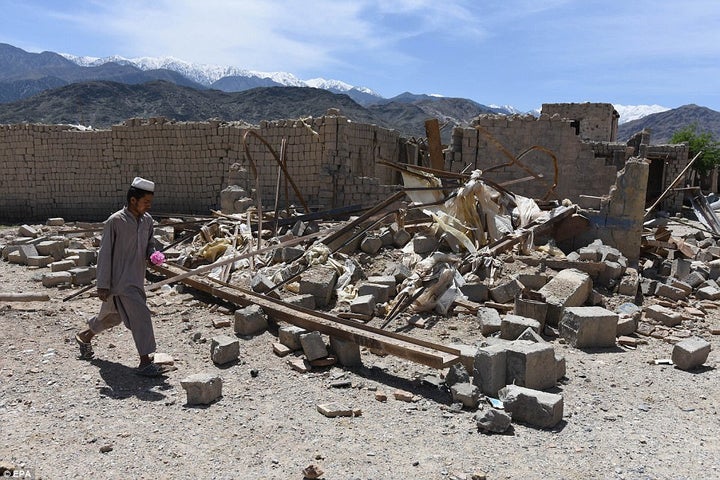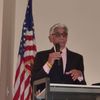
TheFreethoughtproject.com
The US forces in Afghanistan dropped a Massive Ordinance Air Blast (MOAB), also dubbed the “mother of all bombs,” over eastern Afghanistan on April 13th. This was the first use of the most powerful nonnuclear ordinance in the US arsenal. The aim was to destroy the network of caves and tunnels used as safe havens by an Islamic State in Iraq and Syria (ISIS) affiliated group. This terrorist group called Islamic State in Khorasan (IS-K) has established a foothold in Afghanistan since 2015. Its ranks have grown, initially from disaffected Taliban, but now includes terrorists from Uzbekistan, Pakistan and elsewhere. Their declarations and brutal actions make IS-K even more hardline and deadlier than the Taliban. IS-K and ISIS think that the Taliban are not hardcore enough, which is one source of tension and competition between the two groups. They have fought many battles for the control of territory in Afghanistan.
The bomb detonated over the Achin area with a huge flash and a ball of fire. It also made a flash of another sort in the US media. Commentators in print and other media praised the action not only as a tool to inflict heavy damage on ISIS, but also as a message to other belligerent actors that President Donald Trump means business. CNN's Fareed Zakaria called the U.S. strikes against the Assad government in Syria the moment "Donald Trump became president of the United States." Afghanistan’s National Unity Government (NUG) said that they were consulted by the Americans. And although NUG showed a tepidly favorable reaction, other Afghans including the former president Karzai were incensed. Many said that Afghanistan is being used as a proving ground for American weapons. The US Commander in Afghanistan, General John Nicholson, lauded its tactical usefulness saying it was the right weapon for the right target. But MOAB’s efficacy is still in question in terms of the damage inflicted on IS-K. Neither NUG nor the US forces has released an after-action report to ascertain the number of IS-K killed and other casualties.
Furthermore, two more American troops were killed in the bombing area in clashes with IS-K on April 26th. This indicates that even dropping the most powerful bomb might not have any immediate effect. IS-K is a danger to Afghanistan, but it is not as big a threat as the Taliban who now control big swaths of territory. On April 20th the Taliban suicide bombers attacked an Afghan military base in Mazar-e-Sharif in northern Afghanistan. This was the deadliest attack on a major Afghan military base since 2001, resulting in 140 dead and scores injured. The brazen attack on the Afghan National Army 209 Shaheen Corps Headquarters effectively doused MOAB’s flash and silenced its thunder. The Taliban sent a message that they are the force to be reckoned with. Their murderous action effectively turned MOAB’s huge boom into a dud.

www.dailymail.co.uk
The Taliban then went a step further by formally announcing their current spring offensive, dubbed Operation Mansouri. It is named after their leader Mullah Mansour killed by a US drone strike in Pakistan in 2016. Buoyed by their latest attack, the Taliban announced that they hold half of the country and will build their political base. Operation Mansouri will use all means necessary to continue to attack the Afghan and the international forces stationed in the country. The Taliban spokesman indicated that they will also concentrate on building institutions in the areas under their control.
In the absence of a comprehensive Trump Afghan policy, the US General on the ground has asked for a surge of several thousand additional US troops. But it is not clear how the additional troops will be used and what they will achieve. Amid the uncertainties, National Security Advisor H.R. McMaster and Defense Secretary James Mattis visited Kabul recently, holding talks with Ashraf Ghani, the Afghan President.
The protracted political infighting within NUG is another complicating factor in Afghanistan. Afghanistan’s first vice president, Rashid Dostum, is under house arrest for torturing a political opponent. The Afghan judiciary has so far been unable to deal with this case. Dostum’s supporters in the northern Jowzjan province have taken to the streets in support of this former notorious warlord. In another move, Mr. Ghani just fired another political ally, Zia Massoud, from the Northern Alliance group. Massoud advised Ghani on reforms and good governance. Corruption, lack of reforms and lack of good governance are some of the major internal catalysts for instability in Afghanistan. Another notorious warlord, Gulbudin Hekmatyar, with whom Mr. Ghani signed a peace treaty, is returning to the Afghan capital Kabul. Hekmatyar, nicknamed the “butcher of Kabul” has Afghan and American blood on his hands. He was responsible for half of the destruction of Kabul following the fall of the communist government in the early 1990s. As the leader of Hizb-e-Islami residing in Kabul, not only will he reopen old wounds, but will also be an added challenge to the already shaky NUG.

www.gqitalia.it
Whatever the Trump Afghan doctrine may entail, it should take into consideration the dysfunctional Afghan NUG limitations as a partner. Any increase in the US troop levels and/or financial aid should be contingent upon Afghan leaders’ cleaning house. The regional dimension of the Afghan conflict has been mostly ignored thus far. Pakistan, the sustainer of Taliban, will not stop its support without certain assurance and entente with India. China, Iran and Russia have regional interests tied to Afghanistan. Not only does Afghanistan need to fix its internal problems, a serious diplomatic approach at the regional level may be necessary for eventual stability in Afghanistan. Big bombs alone may create temporary spectacular flashes, but they may end up as duds.
